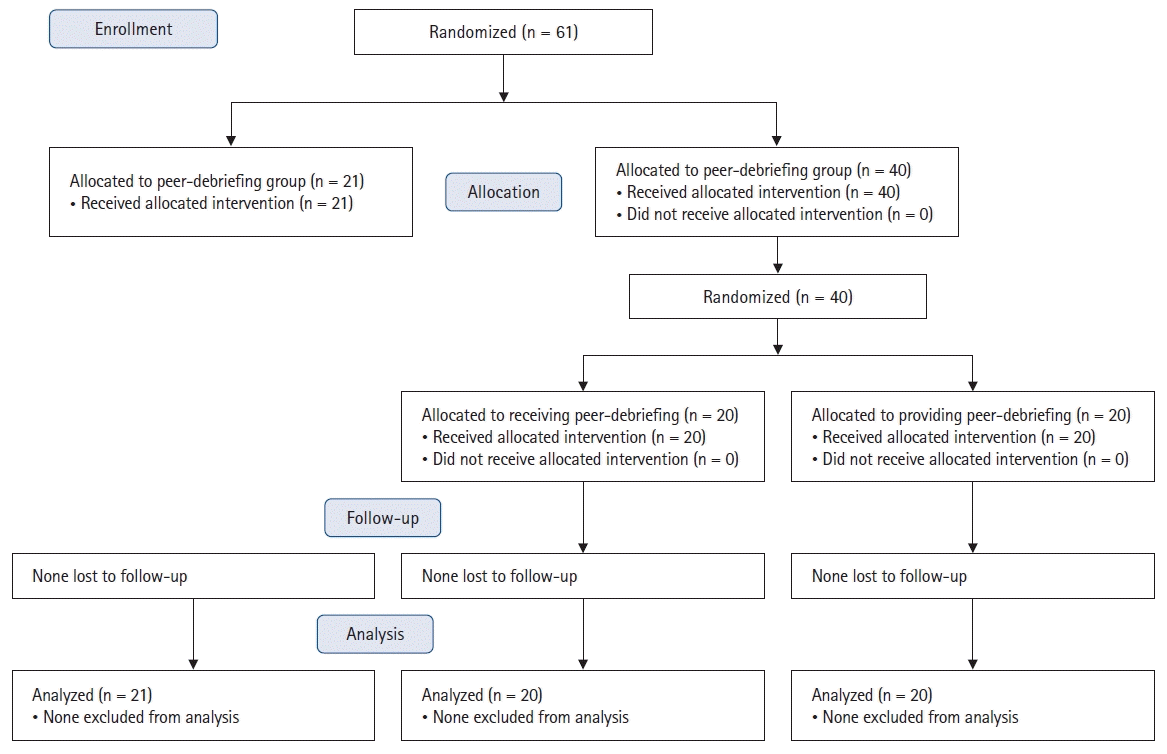1. Motola I, Devine LA, Chung HS, Sullivan JE, Issenberg SB. Simulation in healthcare education: a best evidence practical guide. AMEE Guide No. 82. Med Teach. 2013; 35:e1511–30.
2. Mundell WC, Kennedy CC, Szostek JH, Cook DA. Simulation technology for resuscitation training: a systematic review and meta-analysis. Resuscitation. 2013; 84:1174–83.
3. Gaba DM, Howard SK, Fish KJ, Smith BE, Sowb YA. Simulation-based training in anesthesia crisis resource management (ACRM): a decade of experience. Simul Gaming. 2001; 32:175–93.
4. Gordon M, Darbyshire D, Baker P. Non-technical skills training to enhance patient safety: a systematic review. Med Educ. 2012; 46:1042–54.
5. Ziv A, Wolpe PR, Small SD, Glick S. Simulation-based medical education: an ethical imperative. Simul Healthc. 2006; 1:252–6.
6. Riem N, Boet S, Bould MD, Tavares W, Naik VN. Do technical skills correlate with non-technical skills in crisis resource management: a simulation study. Br J Anaesth. 2012; 109:723–8.
7. Boet S, Bould MD, Bruppacher HR, Desjardins F, Chandra DB, Naik VN. Looking in the mirror: self-debriefing versus instructor debriefing for simulated crises. Crit Care Med. 2011; 39:1377–81.
8. Savoldelli GL, Naik VN, Park J, Joo HS, Chow R, Hamstra SJ. Value of debriefing during simulated crisis management: oral versus video-assisted oral feedback. Anesthesiology. 2006; 105:279–85.
9. Levett-Jones T, Lapkin S. A systematic review of the effectiveness of simulation debriefing in health professional education. Nurse Educ Today. 2014; 34:e58–63.
10. Zendejas B, Wang AT, Brydges R, Hamstra SJ, Cook DA. Cost: the missing outcome in simulation-based medical education research: a systematic review. Surgery. 2013; 153:160–76.
11. Weyrich P, Schrauth M, Nikendei C. Peer-assisted learning: a planning and implementation framework. Guide supplement 30.4--practical application. Med Teach. 2008; 30:444–5.
12. Boet S, Bould MD, Sharma B, Revees S, Naik VN, Triby E, et al. Within-team debriefing versus instructor-led debriefing for simulation-based education: a randomized controlled trial. Ann Surg. 2013; 258:53–8.
13. Doherty-Restrepo J, Odai M, Harris M, Yam T, Potteiger K, Montalvo A. Students' perception of peer and faculty debriefing facilitators following simulation- based education. J Allied Health. 2018; 47:107–12.
14. Topping KJ. Trends in peer learning. Educ Psychol. 2005; 25:631–45.
15. Dr. Gallagher’s Neighborhood. Crisis Resource Management - presented by Dr. Gallagher’s Neighborhood [Video]. YouTube.
https://www.youtube.com/watch?v=mLfrEapmT2I. Published August 5, 2011. Accessed November 1, 2022.
16. Fanning RM, Gaba DM. The role of debriefing in simulation-based learning. Simul Healthc. 2007; 2:115–25.
17. Rudolph JW, Simon R, Raemer DB, Eppich WJ. Debriefing as formative assessment: closing performance gaps in medical education. Acad Emerg Med. 2008; 15:1010–6.
18. Kim J, Neilipovitz D, Cardinal P, Chiu M. A comparison of global rating scale and checklist scores in the validation of an evaluation tool to assess performance in the resuscitation of critically ill patients during simulated emergencies (abbreviated as “CRM simulator study IB”). Simul Healthc. 2009; 4:6–16.
19. Li L, Liu X, Steckelberg AL. Assessor or assessee: how student learning improves by giving and receiving peer feedback. Br J Educ Technol. 2010; 41:525–36.
20. Furmedge DS, Iwata K, Gill D. Peer-assisted learning--beyond teaching: how can medical students contribute to the undergraduate curriculum? Med Teach. 2014; 36:812–7.
21. Lai A, Haligua A, Dylan Bould M, Everett T, Gale M, Pigford AA, et al. Learning crisis resource management: practicing versus an observational role in simulation training - a randomized controlled trial. Anaesth Crit Care Pain Med. 2016; 35:275–81.
22. Delisle M, Ward MA, Pradarelli JC, Panda N, Howard JD, Hannenberg AA. Comparing the learning effectiveness of healthcare simulation in the observer versus active role: systematic review and meta-analysis. Simul Healthc. 2019; 14:318–32.
23. Maas MJ, Sluijsmans DM, van der Wees PJ, Heerkens YF, Nijhuis-van der Sanden MW, van der Vleuten CP. Why peer assessment helps to improve clinical performance in undergraduate physical therapy education: a mixed methods design. BMC Med Educ. 2014; 14:117.
24. Boet S, Pigford AA, Fitzsimmons A, Reeves S, Triby E, Bould MD. Interprofessional team debriefings with or without an instructor after a simulated crisis scenario: an exploratory case study. J Interprof Care. 2016; 30:717–25.
25. Cooper DD, Wilson AB, Huffman GN, Humbert AJ. Medical students' perception of residents as teachers: comparing effectiveness of residents and faculty during simulation debriefings. J Grad Med Educ. 2012; 4:486–9. Erratum in: J Grad Med Educ 2014; 6: 192.
26. Nunnink L. Time to fire the sim educators? Not quite yet. Crit Care Med. 2011; 39:1574–5.
27. Welke TM, LeBlanc VR, Savoldelli GL, Joo HS, Chandra DB, Crabtree NA, et al. Personalized oral debriefing versus standardized multimedia instruction after patient crisis simulation. Anesth Analg. 2009; 109:183–9.




 PDF
PDF Citation
Citation Print
Print




 XML Download
XML Download